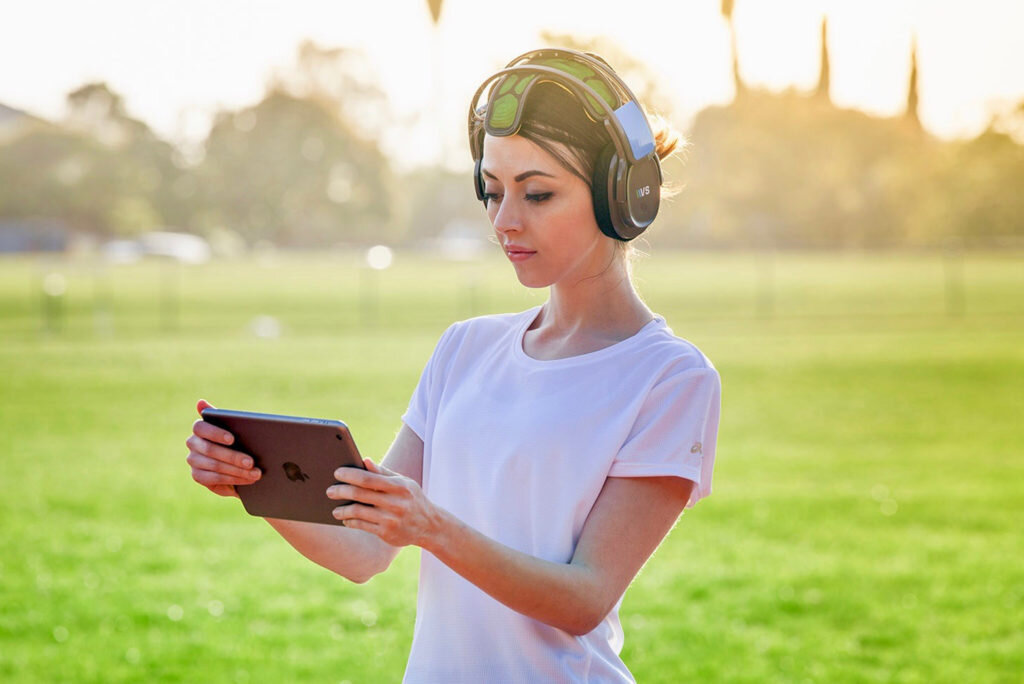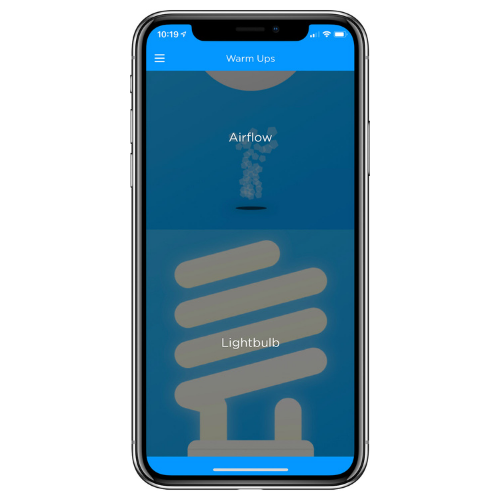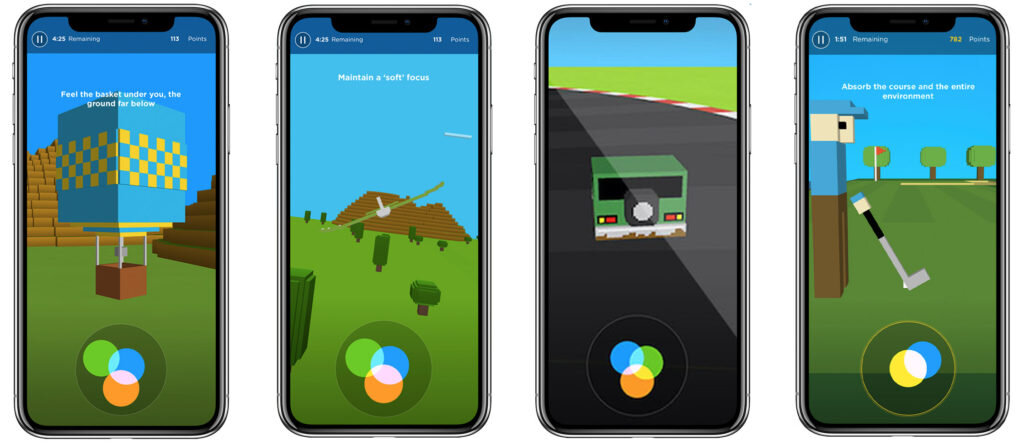Introducing the Versus Exercises to Clients
In Part 2 of the Versus Professional Support Series, we examined the different elements of a plan, including plan duration and performance protocol. Now that you’ve learned how the plan shapes each user’s experience of the Versus exercises, we will explain how to orient clients toward the Versus games.
Here, we suggest language you can use to introduce the Versus exercises and their goals to your clients. Stay tuned for Part 4 of this series, where we’ll provide detailed instructions for interpreting your clients’ exercise results and answer frequently asked client questions related to exercise progress.
Contents
1. How do I explain the Versus exercises to my clients?
2. What are the Versus warm ups?
3. What is the goal of the Versus exercises?
Game Feedback
The 3 Circles
NeuroPoints
4. How do I guide my clients in playing the Versus games?
NeuroBalloon
NeuroGlider
NeuroRacer
NeuroGolf
5. How frequently should my clients exercise with Versus?
6. How do my clients get started with Versus?
How do I explain the Versus exercises to my clients?
Via the Versus headset and app, your clients will play games using their brainwaves. In the Versus exercises, clients will be rewarded for creating a brain state that is calm but focused, or relaxed but aware, depending on their assigned performance protocol. Each user is provided either a stress or focus performance protocol based on their NeuroPerformance Assessment results. The user’s performance protocol determines the goal of their Versus exercises.
The more effectively the user creates a calm or focused brain state, the better they will perform in the games and the more points they’ll earn. With repeated Versus use, your clients will learn how the optimal brain state for focus or relaxation feels and how they can create this desired brain state in everyday life.
What are the Versus warmups?
To give your clients a feel for the Versus headset and interacting with brain-controlled games, we suggest that you have them try the two Versus warm ups before they start their first exercise session.
The warm ups are available under the “Warm Ups” tab in the Versus app; both require a Versus headset. The user’s performance in the warm ups will not count toward their overall exercise results or points.
In Airflow, users will make a ball rise by relaxing or focusing their mind and converging the three circles at the bottom of the screen. In Lightbulb, the more effectively users create the desired brain state and converge the three circles, the more the lightbulb on the screen will illuminate. Learn more about the three circles and the goal of the Versus exercises below.
What is the goal of the Versus exercises?
Game Feedback
With Versus, the user’s brainwaves power the games. The more effectively the user is creating a less stressed or more focused brain state, the better each game will work – the balloon will rise, the plane will fly, the car will accelerate, the golf ball will propel. The user will also receive audio feedback, such as the “whoosh” of the hot air balloon’s flame, to indicate that they are successfully focusing or relaxing.
2. The 3 Circles
At the bottom of the screen in each Versus game are three circles which represent the different components of brain activity that are being measured during the exercises.
The more the circles are overlapped, the more effectively the user is creating the desired brain state. When the three circles are completely converged, a golden ring will appear around them. This indicates that the user’s brainwaves are in the optimal (or ideal) zone for focus or relaxation.
As soon as the user begins to overthink or become distracted, the circles will separate from one another. Additional information about the three circles and what each means is available here.
3. NeuroPoints
In the top right corner of each game, the app keeps track of the user’s points, also referred to as “NeuroPoints”. The more successfully the user creates the optimal brain state (converges the three circles), the more points they’ll earn. If they reach the optimal zone, when all three circles are converged, the user’s points total will turn gold and they’ll earn points more quickly.
How do I guide my clients in playing the Versus games?
There are four Versus games which will be played in the same order in each exercise session. On a standard exercise plan, each game will last for 5 minutes. However, if you have edited a user’s session duration, that duration will be divided equally among each of the four games.
Portions of the information provided below are included in a step-by-step professional user guide, which you can download here. If you have clients who are using Versus outside of the office, you can provide them with this guide to help direct them through the games.
NeuroBalloon
In the NeuroBalloon game, the user will be controlling the altitude of a hot air balloon with their brainwaves. The more focused or relaxed they are, the more the circles at the bottom of the screen will converge and the higher the balloon will ascend. If the user becomes distracted or worried during this game, the balloon’s flame will go out and the balloon will descend.
NeuroGlider
During NeuroGlider, the user will control the altitude of a plane by relaxing or focusing. The calmer or more focused their mind, the higher the glider will fly and vice versa. If they wish, users can steer the glider by tilting their iDevice right and left. For an added challenge, users can try to steer their glider through the golden squares.
NeuroRacer
In this game, users accelerate a car by calming their mind or concentrating. If the user loses their concentrated or relaxed brain state, the brake lights will come on and the car will slow. Users should try to steer their vehicle to stay on the track by tilting their iDevice left and right.
NeuroGolf
The final game, NeuroGolf, is also the most user-intensive. When the three circles at the bottom of the screen are converged, the user will need to tap the screen to swing the golf club. The more converged the circles are when the user taps, the farther the ball will go.
The goal of this game is to encourage users to actively identify how it feels to be in a less stressed or more focused brain state.
How frequently should my clients exercise with Versus?
Initially, all users will be assigned an exercise plan with a session duration of 20 minutes (5 minutes per game). We encourage users to exercise for 20 minutes a day, three times per week. From user feedback, we have found that this is the average amount of time at which users feel they are making progress with Versus, but don’t feel burdened by the exercises.
Depending on the nature of your business and the goals of your program, you may wish to encourage your clients to exercise more or less frequently each week. As a provider, you may also change the maximum amount of time that a client may exercise each day by editing their session duration via your Versus Professional Dashboard. Explore the steps for doing so here.
Based on our research, it generally takes users a minimum of 450 minutes of exercise before they see noticeable results. Please keep this in mind when reviewing and discussing progress with your clients.
How do my clients get started with Versus?
You and your clients can purchase Versus headsets here. Remember, multiple users may share a Versus headset, but each user needs their own Versus subscription.
As a professional, you may choose to rent or sell a Versus headset to each client, or to have each client purchase a headset of their own. Only registered Versus Partners may resell Versus headsets.





